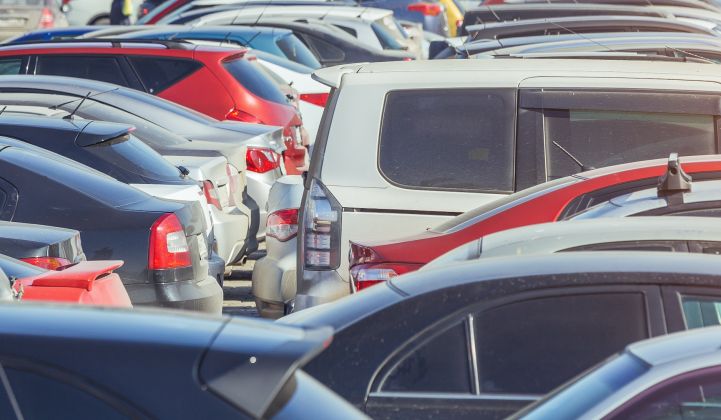The Trump administration is finalizing new auto efficiency standards that would undercut those established under President Obama.
According to the Hill, the Environmental Protection Agency and the Department of Transportation this past weekend sent the Safer Affordable Fuel-Efficient Vehicles Rule to the Trump White House for final review. The EPA said the final rule will not be made public until the Office of Management and Budget completes its assessment.
The news of the rule’s finalization comes two weeks after the Washington Post reported a compromise deal between California and four automakers, including Volkswagen, Honda, BMW and Ford, to increase fuel economy standards. The agreement strikes a balance between the Obama rules and the Trump administration’s version, requiring car manufacturers to increase fleet fuel economy by an annual 3.7 percent from model years 2022 through 2026.
The Trump rule released last year froze standards at model-year 2020 levels, which is 42.7 miles per gallon for passenger cars. The Obama-era policy required automakers to reach a 50-mpg average fleetwide by 2025.
While the Trump administration's rule is rolling forward, it remains unclear how it will formally respond to the California deal — aside from calling it a “PR stunt.”
California has a waiver that allows it to set more stringent fuel emissions standards, which the Trump administration also proposed repealing last year. California has vowed to vigorously defend that authority if the administration revokes it, and has already sued over the new rules. In addition to the Golden State, 13 states plus Washington, D.C. adhere to those stricter requirements.
The recently announced deal with carmakers should offer California more confidence in its ability to pursue standards stricter than federal requirements. But the agreement is nonbinding, and automakers have also expressed a strong preference for a unified standard rather than a split market.
California's agreement with automakers has an impact outside the U.S. as well. While Canada usually aligns its auto market with U.S. standards, the Canadian government in June unveiled an agreement with California to work together on cleaner vehicles. Nearly a quarter of Canada’s emissions come from the transportation sector and the country is currently reviewing its light-duty vehicle regulations.
An analysis published Wednesday by clean energy advocacy group Energy Innovation found that if the administration does eliminate California’s waiver, costs from the rule change would total $400 billion in 2018 dollars by 2050. By 2035, Energy Innovation projects that transportation emissions will be at least 10 percent higher than if the previous standard remained in place. In Canada, emissions would rise 11 percent.
While the shift toward more relaxed fuel-efficiency standards would mean economic gains in the first years of its implementation, according to Energy Innovation, those benefits wane over time, and consumers will pay higher fuel costs.
The EPA and the National Highway Transportation Safety Administration said the Trump administration's “rule will benefit all Americans by improving the U.S. fleet’s fuel economy, reducing air pollution [and] helping make new vehicles more affordable for all Americans.”
Experts previously found that the Obama-era rule would have saved consumers $8,000 over the life of a vehicle and provided a boost to the economy of between $25 billion and $40 billion above the baseline by 2025.
--
We're gathering industry views on how renewable integration, decarbonization, sector electrification and the growing need for increased capacity and flexibility are impacting electricity systems. Join us October 29-30 in Austin, TX at GTM's Power and Renewables Summit.




